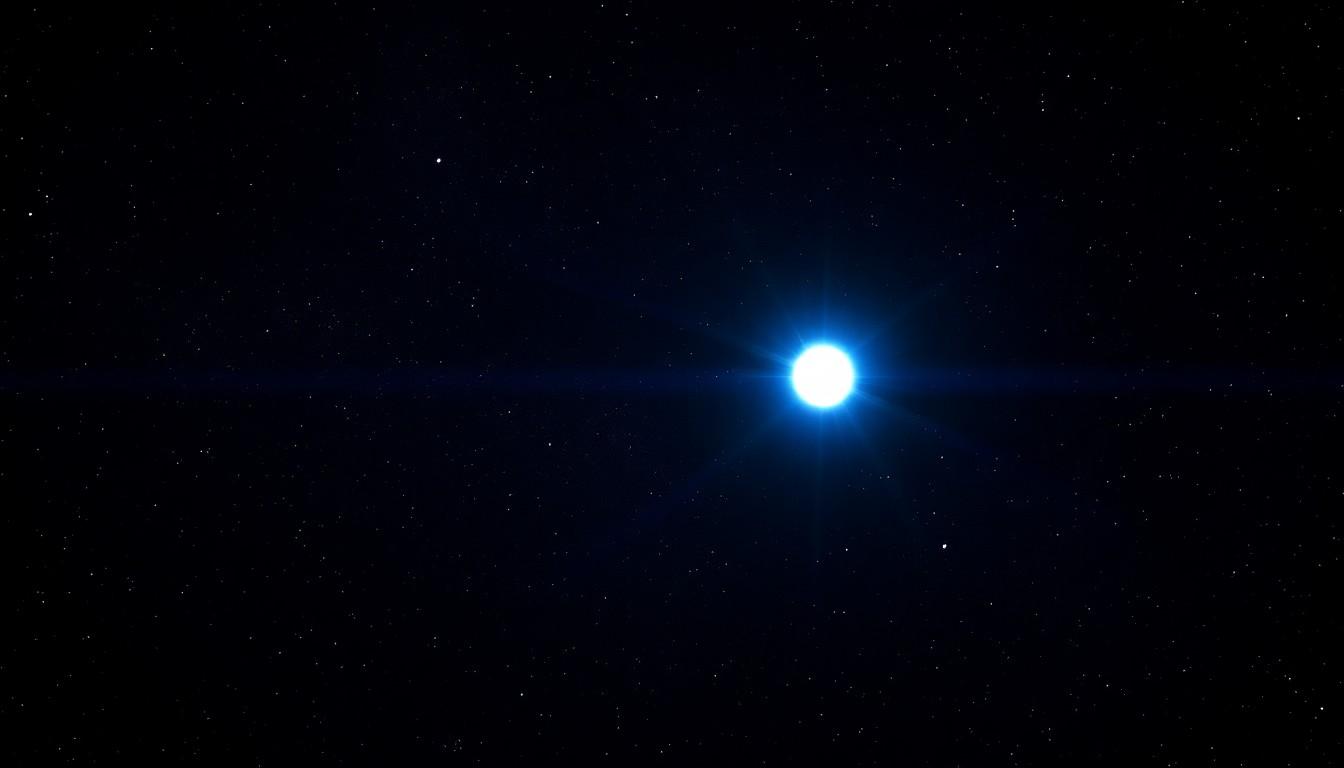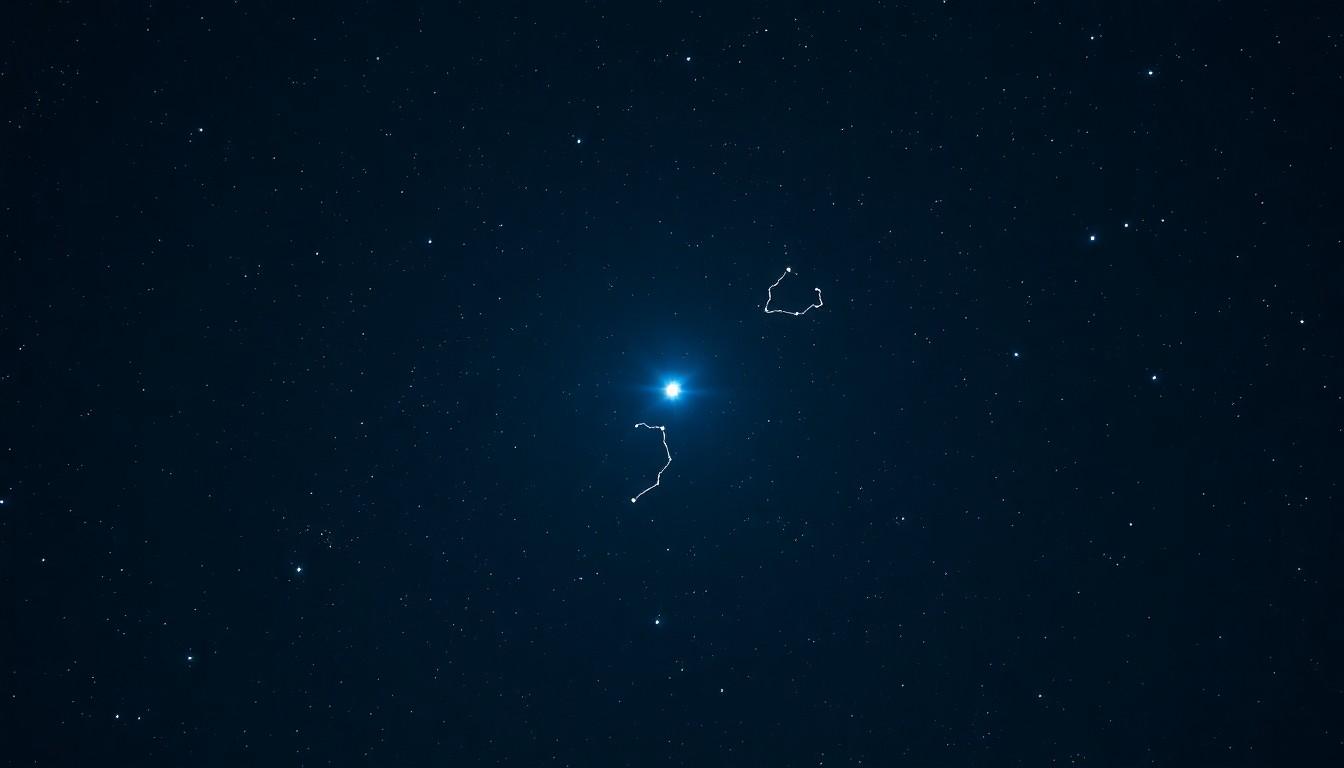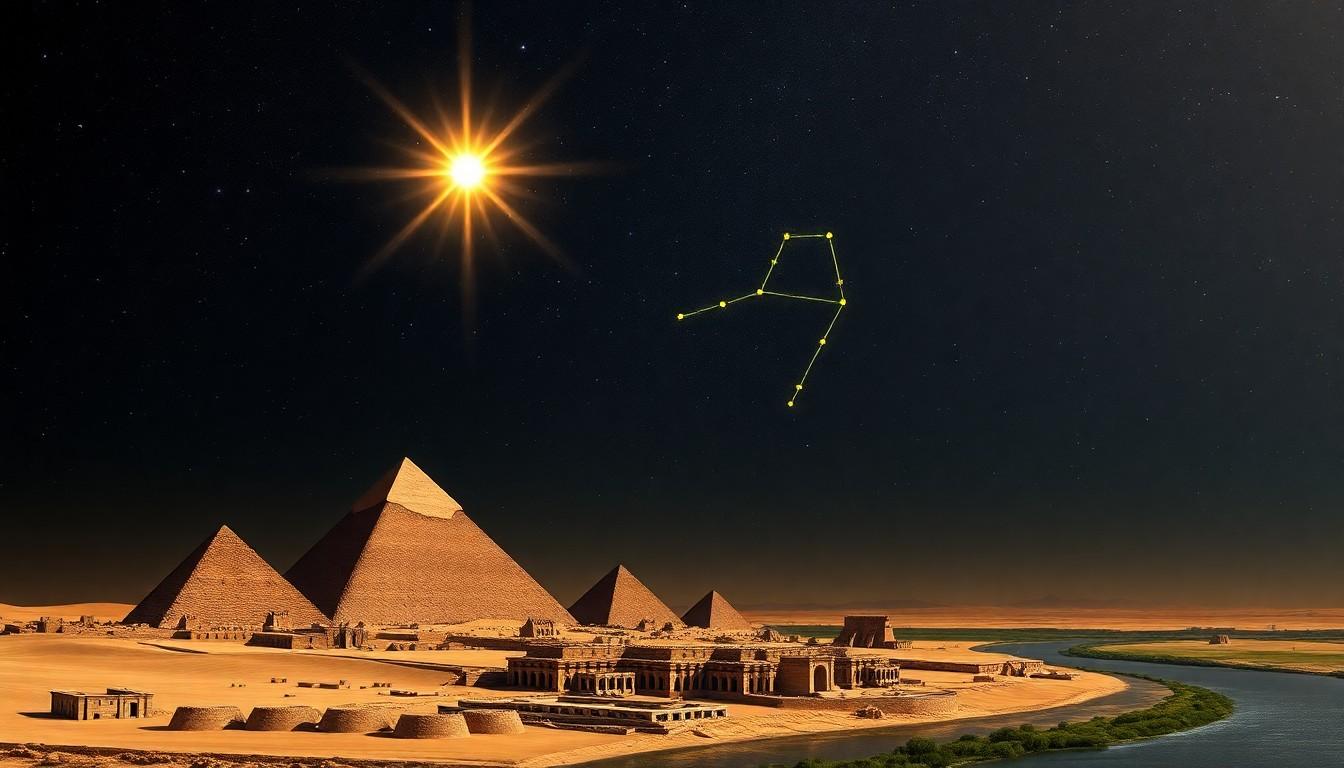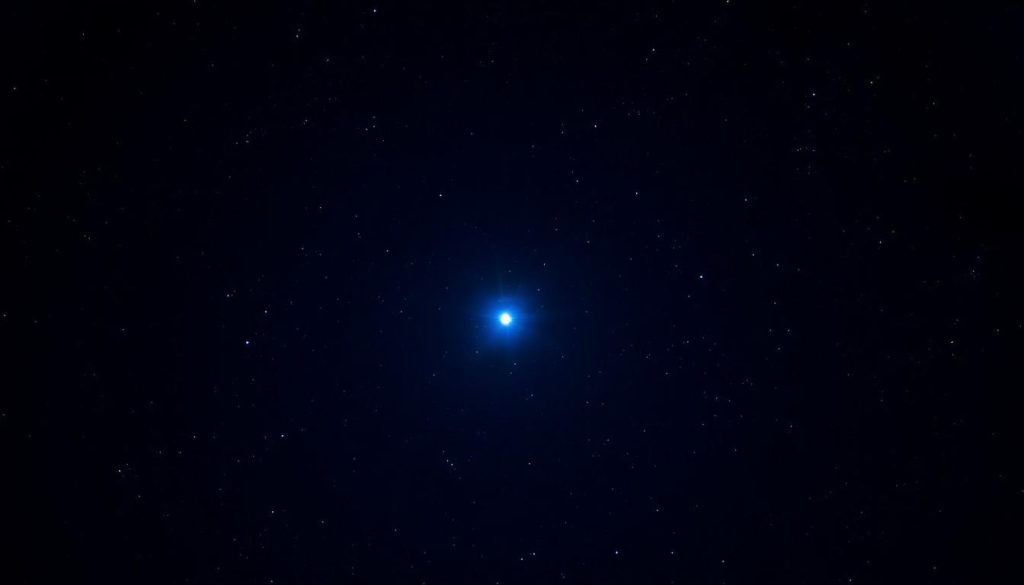Sirius, the brightest star in Earth’s night sky, commands attention as the standout feature of the Canis Major constellation. Known as the “Dog Star,” it’s located just 8.6 light-years away, making it one of our closest stellar neighbors. Its brilliant blue-white glow has captivated astronomers and stargazers for millennia.
The star’s position in the Canis Major constellation connects to rich mythology across ancient cultures. To the Greeks, this celestial formation represented Orion’s loyal hunting dog, while Egyptians associated Sirius’s annual appearance with the life-giving Nile floods. Modern astronomy reveals that Sirius is a binary star system consisting of Sirius A and its smaller companion, Sirius B, a fascinating white dwarf.
What Is Sirius in Canis Major
Sirius dominates the constellation Canis Major as the brightest star visible from Earth. In the neck region of the celestial greater dog, Sirius forms part of a binary star system consisting of two components: Sirius A and Sirius B.
Physical Characteristics
- Sirius A shines with a distinctive blue-white color
- Sirius B appears as a faint white dwarf companion
- The binary system rotates around a common center of mass
Location and Identification
Identifying Sirius in Canis Major involves a simple stargazing technique:
- Follow Orion’s Belt stars eastward
- Look for the brightest star in that direction
- Find it between 60°N and 90°S latitude
Visibility Windows
Optimal viewing periods vary by hemisphere:
- Northern Hemisphere: December through March
- Southern Hemisphere: November through April
- Peak visibility occurs during winter months in the Northern Hemisphere
| Visibility Factor | Northern Hemisphere | Southern Hemisphere |
|---|---|---|
| Visible Months | December – March | November – April |
| Best Viewing Time | Winter Evenings | Summer Evenings |
| Latitude Range | Up to 60°N | Down to 90°S |
The star’s prominence in the night sky makes it an essential reference point for amateur astronomers identifying other celestial objects. Its position in Canis Major creates a natural marker for navigating the southern celestial hemisphere constellations.
Physical Characteristics of Sirius

Sirius is a remarkable stellar object with distinct physical properties that make it unique in our cosmic neighborhood. It is located in the Canis Major constellation, 8.60 light-years from Earth, and represents one of the closest star systems to our solar system.
Brightness and Luminosity
Sirius A radiates with a surface temperature of 9,845 Kelvin, producing a brilliant blue-white glow visible from Earth. The star’s luminosity stems from its mass of 2.063 solar masses combined with its radius of 1.713 solar radii. This composition results in Sirius appearing as the brightest star in Earth’s night sky, outshining all other stellar objects except the Sun.
Binary Star System
The Sirius system consists of two stars: Sirius A, a main-sequence star of spectral type A0/A1, and Sirius B, a white dwarf companion. The white dwarf Sirius B exhibits unique characteristics:
- Compact size compared to Sirius A
- Dense stellar material composition
- Spectral classification of DA2
- Lower luminosity than its primary companion
| Component | Mass (Solar Masses) | Temperature (K) | Spectral Type |
|---|---|---|---|
| Sirius A | 2.063 | 9,845 | A0/A1 |
| Sirius B | ~1.0 | ~25,000 | DA2 |
Location Within Canis Major Constellation

Sirius is prominently located as Alpha Canis Majoris in the Canis Major constellation, which represents the dog’s eye in traditional star maps. This binary star system is the brightest beacon in the southern celestial hemisphere.
Navigation and Visibility
Orion’s Belt provides a reliable pointer to locate Sirius in the night sky. Following an imaginary line eastward through the three stars of Orion’s Belt leads directly to Sirius’s distinctive blue-white glow. The star’s visibility extends from latitudes between 60°N and 90°S, making it observable from most populated regions on Earth.
| Visibility Details | Specifications |
|---|---|
| Latitude Range | 60°N to 90°S |
| Primary Guide | Orion’s Belt |
| Position | Southern Celestial Hemisphere |
Neighboring Stars
The Canis Major constellation contains several notable stellar companions near Sirius:
- Adhara (Epsilon Canis Majoris): Located in the dog’s hindquarters
- Mirzam (Beta Canis Majoris): Marks the dog’s front paw
- Wezen (Delta Canis Majoris): Forms part of the dog’s hindquarters
- Murzim (Gamma Canis Majoris): Positioned west of Sirius
These stars create a distinctive pattern that outlines the celestial Great Dog, with Sirius marking its neck region. Each neighboring star contributes to the constellation’s recognizable shape against the night sky.
Historical and Cultural Significance

Sirius and Canis Major constellations hold profound cultural significance across ancient civilizations. Their prominence in the night sky has influenced religious beliefs, navigation methods, and timekeeping practices throughout history.
Ancient Egyptian Connection
The Ancient Egyptians integrated Sirius into their calendar system, marking the star’s predawn appearance as the start of their New Year. This celestial event coincided with the annual flooding of the Nile River, connecting Sirius to agriculture, prosperity, and the goddess Isis in Egyptian mythology. The Babylonians recorded Sirius in their “Three Star Each” tablets around 1100 BCE, depicting it as an arrow aimed toward Orion.
Mythology and Folklore
Multiple cultures associate Sirius with canine imagery in their folklore traditions. The Polynesians used Sirius to navigate the Pacific Ocean, incorporating its position to determine seasonal changes. North American indigenous tribes, including the Seri and Tohono O’odham, called Sirius the “Wolf Star” or “dog that follows mountain sheep.” These interpretations highlight Sirius’s role as a celestial guide for different societies, influencing their spiritual beliefs and practical activities.
| Culture | Significance of Sirius |
|---|---|
| Egyptian | New Year marker, Nile flooding indicator |
| Babylonian | Celestial arrow in star tablets |
| Polynesian | Navigation aid, winter indicator |
| Indigenous North American | Wolf/Dog star, hunting guide |
Scientific Observations and Research
Scientific observations of Sirius reveal a complex binary star system with unique characteristics. Advanced telescopes and spectrographic analysis have expanded our understanding of this celestial phenomenon.
Modern Studies of Sirius
Modern astronomical research focuses on Sirius’s binary system dynamics. Sirius A dominates the system with an apparent magnitude of -1.46, making it nearly twice as bright as Canopus, the second brightest star. The main-sequence star Sirius A exhibits these key characteristics:
| Component | Measurement |
|---|---|
| Distance from Earth | 8.6 light-years |
| Mass | 2x Solar Mass |
| Luminosity | 25x Solar Luminosity |
| Spectral Type | A0mA1 Va |
Sirius B, the white dwarf companion, displays these properties:
| Component | Measurement |
|---|---|
| Apparent Magnitude | 8.44 |
| Spectral Type | DA2 |
| Visual Brightness | Significantly dimmer than Sirius A |
Impact on Astronomy
The proximity of Sirius to Earth creates exceptional opportunities for astronomical research. The binary system serves as a laboratory for studying:
- Stellar evolution patterns through white dwarf examination
- Mass-luminosity relationships in binary systems
- Orbital mechanics of close stellar pairs
- Spectroscopic analysis techniques for bright stars
The brightness of Sirius A enables detailed spectroscopic studies of main-sequence stars. Its white dwarf companion, Sirius B, provides valuable data for understanding stellar life cycles and degenerate matter states.
Conclusion
Sirius and the Canis Major constellation are remarkable celestial features that continue to captivate astronomers and stargazers. This binary star system’s proximity to Earth makes it an invaluable subject for scientific research, while its cultural significance spans millennia.
The Dog Star’s brilliant presence in our night sky is a testament to the universe’s boundless wonders. Its role in ancient civilizations and modern astronomical studies demonstrates how celestial objects bridge our past understanding with future discoveries. Whether viewed through sophisticated telescopes or admired with the naked eye, Sirius remains an extraordinary cosmic beacon.

